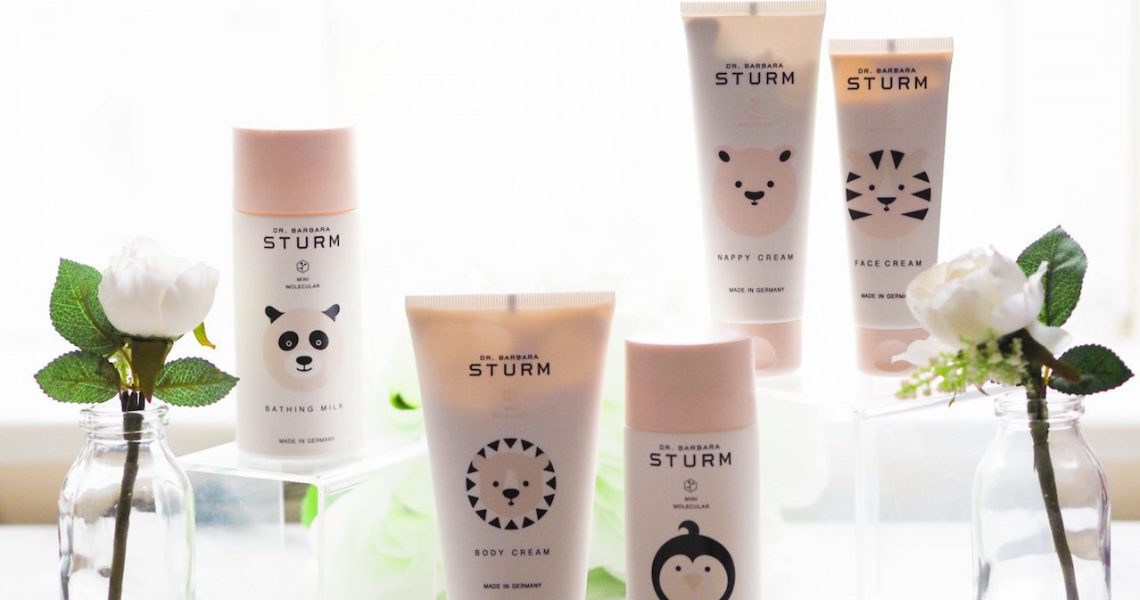Luxury beauty brands are finding a new customer acquisition method: creating clean beauty products for babies and kids that will appeal to their millennial parents.
Premium and luxury beauty brands like Aurelia, Pai, Dr. Barbara Sturm and Chantecaille have all expanded their brands into the baby and children’s category over the past 24 months. Dr. Barbara Sturm, the most recent entrant, released its Mini Molecular line in April 2018 with five products that retail for $38 to $65. Meanwhile, Chantecaille will add an SPF to its children’s product assortment in early 2020. And Net-a-Porter, which recently expanded into children’s fashion, featured baby beauty brands, Little Aurelia and Bamford, as part of its summer travel campaign in May. These beauty companies are focusing on bringing their brands’ core skin benefits, such as fighting inflammation, to a younger generation.
Millennial customers have arguably been at the forefront of the push toward clean beauty and transparent ingredients, creating an organic personal-care market that will reach $25 billion by 2025, according to Grand View Research. But now, these consumers are becoming parents and bringing their tastes and preferences to their children. According to the Pew Research Center, millennial women (born from 1981 to 1996) accounted for 82% of all U.S. births in 2016, raising the total of millennial mothers to 17 million. As a result, heritage players like Johnson’s Baby and Aveeno Baby (also owned by Johnson & Johnson) have fallen flat. In May 2018, Johnson & Johnson relaunched its baby-care line after a 20% sales decline (since 2011) to $1.9 billion coupled with growing scrutiny over its ingredient safety.
“We constantly see consumers becoming more aware of what ingredients they’re putting on their skin, and [we see] the increasing investment in self-care through skin care,” said Mallory Huron, beauty editor at trend forecasting agency Fashion Snoops. “It’s a natural extension that mothers are ensuring that their children have the same quality products and start to build healthy self-care practices through something simple like skin care.”
When Chantecaille launched its Bébé line of four products in 2016 (that sell for between $42 and $55), it was a personal motivation, said Olivia Chantecaille, Chantecaille founder. But she also considered it a white space within prestige beauty space. The brand’s baby products consist of a face cream, body lotion, body oil, and hair and body wash, and are meant to be gentler versions of the brand’s skin care.
“The market is definitely growing. Parents [are] becoming more curious about what ingredients are actually in their baby and kid products, and actively seeking out truly natural formulas. We’re seeing an uptick in interest,” she said. Chantecaille declined to state Bébé sales or overall brand sales, but said the Bébé line had 31% growth globally in 2018, including a 90% growth in the Asian market.
The luxury children’s beauty category is also seeing brands come to market without first stemming from an adult brand. Harry & Rose, launched in January 2017, and Baja Baby, re-launched in July 2016, have all cropped up as baby- and kids-specific brands, sans adult products. Jenni Reichert, Baja Baby founder, said the brand is able to play in the luxury space because beauty today is synonymous with health. Reichert declined to state specific financials but said Baja Baby’s 2018 sales were just under $1 million, and the company has a customer retention rate of about 50%. Baja Baby, which already sells body wash, body lotion and hair care for $24.95 each, plans to release bath products in early 2020.
Ad position: web_incontent_pos1
“We want to play in the luxury arena, not because of branding, but because of ingredients,” said Reichert. “Reliable products fall under the mass [category], but people are willing to spend more money on the reassurance [of non-toxic products].”




